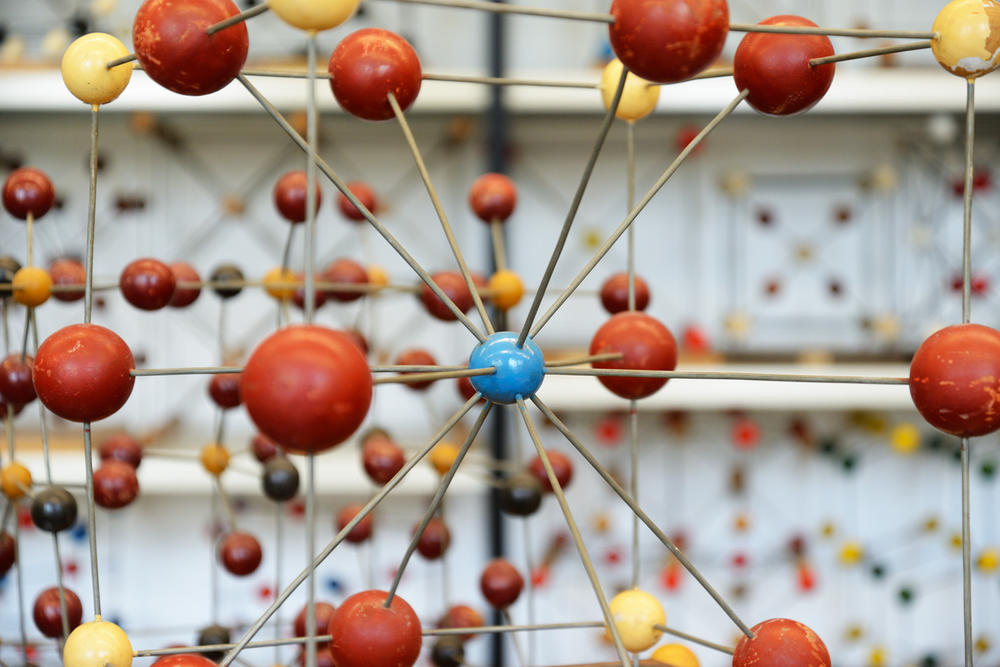A Digital Network for University Collections
View into the crystallographic collection at the Humboldt-Universität zu Berlin
Image Credit: Sammlungsfotografen 2020
Tracing and researching collections and objects, identifying and describing collections, generating and networking metadata, supporting provenance research and transfer – these key points describe the goals of the feasibility study around the scientific university collections.
The project is jointly managed by Freie Universität Berlin, Humboldt-Universität zu Berlin, and Charité – Universitätsmedizin Berlin, but refers to all partner institutions of the Berlin University Alliance. The aim is to evaluate IT systems and digital strategies, considering different perspectives on the scientific use, connectivity and indexing of collections, as well as subject-specific needs. With case studies on collections, usage and digitalization scenarios, the result will be a recommendation for action that will serve as the basis for a sustainable collection infrastructure for the partner institutions.
The Coordination Center for Scientific University Collections in Germany at Humboldt-Universität zu Berlin, with its nationwide and international expertise in this field, is partnering this project, which is a novelty in its objective as an overarching evidence structure for collections.
In addition, the overarching and transdisciplinary approach and the strategic orientation are supported by an advisory board of experts.
"A Digital Network for University Collections" is a component of the Berlin University Alliance's Sharing Resources objective. Access to excellent infrastructure is a crucial competitive factor in promoting research and recruiting outstanding researchers. The aim is to make the best possible use of existing resources and to be able to plan new projects jointly and thus more efficiently. Collections are considered part of the complex research infrastructure, which should be transparent and accessible to the four partner institutions.
More than 90 scientific collections, some of them unique, are known at the universities in the alliance. University collections were and are created in the context of scientific research or as a basis for teaching. In some subjects, they form a central research basis; in their diversity they are the basis for the histories of the respective disciplines, history of science and cultural history, object and collection research. The collections are mainly housed in the institutes, which favors close involvement in teaching and research. The connectivity between the collections is still comparatively weak and poorly organized, which currently makes it difficult to use them.
A good, centralized record facilitates and enables provenance research, collaborations in teaching, cooperative research, exhibitions, and citizen science projects. At the same time, such a system is a challenging task due to the multitude of requirements and its interdisciplinarity. The study aims to develop and evaluate, over a 19-month period, a concept that will open the collections as a scientific resource while supporting the needs of the collections.
Project Management and Contact
- Dr. Yong-Mi Rauch, Representative of collections, Humboldt-Universität zu Berlin
Email: yong-mi.rauch@ub.hu-berlin.de - Dr. Andreas Brandtner, Executive Director of the University Library of Freie Universität Berlin
Email: brandtner@ub.fu-berlin.de - Prof. Dr. Thomas Schnalke, Head of Berliner Medizinhistorisches Museum der Charité
Email: thomas.schnalke@charite.de
Project Team
- Dr. Franziska Hormuth, Collection networking and Communication
Email: franziska.hormuth@hu-berlin.de - Dr. Michael Müller, IT-Infrastructure
Email: michael.mueller@hu-berlin.de

